Subtraction of Fractions having the Same Denominator
In subtraction of fractions having the same denominator, we just need to subtract the numerators of the fractions.
To find the difference between like fractions we subtract the smaller numerator from the greater numerator. The denominator of the required fraction is the common denominator of the given fractions.
Difference of two fractions with like denominators = Difference of NumeratorsCommon Denominator
For example:
57 - 27 = 5−27 = 37
Follow the steps of subtraction of like fractions:
We can subtract in a similar way. 7/8 of the class are boys.
3/8 of the class are girls. By how much fraction are the boys more?
Boys 7/8
Girls 3/8
7/8 - 3/8
= (7 - 3)/8
= 4/8
The difference is 4/8 or 1/2
We can also reduce the fraction to the lowest term.
4/8 ÷ 4/4
= 1/2
Examples of subtracting fractions with the same denominator:
1. Subtract 3/8 from 7/8
Solution:
7/8 – 3/8
= (7 - 3)/8

= 1/2
2. Subtract 5/6 from 11/6
Solution:
11/6 – 5/6
= (11 - 5)/6
= 6/6
= 1/1
= 1
3. Subtract 7/9 from 11/9
Solution:
11/9 – 7/9
= (11 - 7)/9
= 4/9
4. Subtract 4/6 from 16/6
Solution:
16/6 – 4/6
= (16 - 4)/6

= 2/1
= 2
5. Subtract 2/4 from 17/4
Solution:
17/4 – 2/4
= (17 - 2)/4
= 15/4
Subtraction of Like Fractions:
6. Subtract 717 - 517
717 - 517 = 7−517
= 217
7. Subtract 1323 - 923
1323 - 923 = 13−923
= 423
Subtraction of Fractions with the Same (Like) Denominator
To subtract fractions with like denominator, we subtract the smaller numerator from the greater to obtain the numerator of the required fraction.
8. Subtract 38 from 98
Solution:
98 + 38
= 9−38
= 68
9. Subtract 514 from 914
Solution:
914 - 514
= 9−514
= 414
Worksheet on Like Fraction:
1. Subtract the following Like Fractions:
(i) 1217 - 517
(ii) 1723 - 423
(iii) 913 - 313
(iv) 311 - 211
(v) 517 - 217
(vi) 1116 - 716
(vii) 924 - 524
(viii) 1524 - 1424
(ix) 712 - 412
(x) 816 - 516
(xi) 914 - 514
(xii)818 - 518
Answer:
1. (i) 717
(ii) 1323
(iii) 613
(iv) 111
(v) 317
(vi) 416
(vii) 424
(viii) 124
(ix) 312
(x) 316
(xi) 414
(xii)318
2. Fill in the blanks:
(i) 821 - 3−−− = 521
(ii) 57 - −−−7 = 17
(iii) 519 - 319 = 2−−−
(iv) 916 - 7−−− = 216
Answer:
2. (i) 21
(ii) 4
(iii) 19
(iv) 16
● Related Concepts
- Fraction of a Whole Numbers
- Representation of a Fraction
- Equivalent Fractions
- Properties of Equivalent Fractions
- Finding Equivalent Fractions
- Reducing the Equivalent Fractions
- Verification of Equivalent Fractions
- Finding a Fraction of a Whole Number
- Like and Unlike Fractions
- Comparison of Like Fractions
- Comparison of Fractions having the same Numerator
- Comparison of Unlike Fractions
- Fractions in Ascending Order
- Fractions in Descending Order
- Types of Fractions
- Changing Fractions
- Conversion of Fractions into Fractions having Same Denominator
- Conversion of a Fraction into its Smallest and Simplest Form
- Addition of Fractions having the Same Denominator
- Addition of Unlike Fractions
- Addition of Mixed Fractions
- Word Problems on Addition of Mixed Fractions
- Worksheet on Word Problems on Addition of Mixed Fractions
- Subtraction of Fractions having the Same Denominator
- Subtraction of Unlike Fractions
- Subtraction of Mixed Fractions
- Word Problems on Subtraction of Mixed Fractions
- Worksheet on Word Problems on subtraction of Mixed Fractions
- Addition and Subtraction of Fractions on the Fraction Number Line
- Word Problems on Multiplication of Mixed Fractions
- Worksheet on Word Problems on Multiplication of Mixed Fractions
- Multiplying Fractions
- Dividing Fractions
- Word Problems on Division of Mixed Fractions
- Worksheet on Word Problems on Division of Mixed Fractions
4th Grade Math Activities
From Subtraction of Fractions having the Same Denominator to HOME PAGE
Didn't find what you were looking for? Or want to know more information about Math Only Math. Use this Google Search to find what you need.
Recent Articles
-
Subtraction of Decimals | Subtracting Decimals | Decimal Subtraction
Apr 24, 25 03:25 PM
We will discuss here about the subtraction of decimals. Decimals are subtracted in the same way as we subtract ordinary numbers. We arrange the digits in columns -
How to Do Long Division? | Method | Steps | Examples | Worksheets |Ans
Apr 24, 25 10:18 AM
As we know that the division is to distribute a given value or quantity into groups having equal values. In long division, values at the individual place (Thousands, Hundreds, Tens, Ones) are dividend… -
Division by Two-Digit Numbers | Knowledge of Estimation | Division
Apr 24, 25 10:12 AM
In division by two-digit numbers we will practice dividing two, three, four and five digits by two-digit numbers. Consider the following examples on division by two-digit numbers: Let us use our knowl… -
Addition of Decimals | How to Add Decimals? | Adding Decimals|Addition
Apr 24, 25 01:45 AM
We will discuss here about the addition of decimals. Decimals are added in the same way as we add ordinary numbers. We arrange the digits in columns and then add as required. Let us consider some -
Addition of Like Fractions | Examples | Videos | Worksheet | Fractions
Apr 23, 25 09:23 AM
To add two or more like fractions we simplify add their numerators. The denominator remains same. Thus, to add the fractions with the same denominator, we simply add their numerators and write the com…


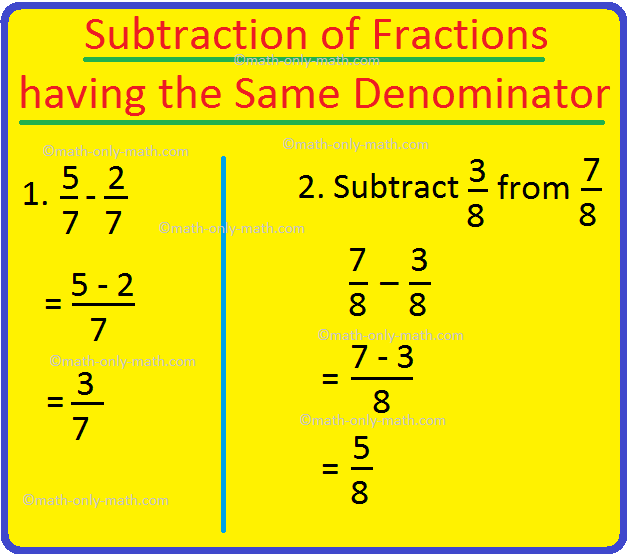



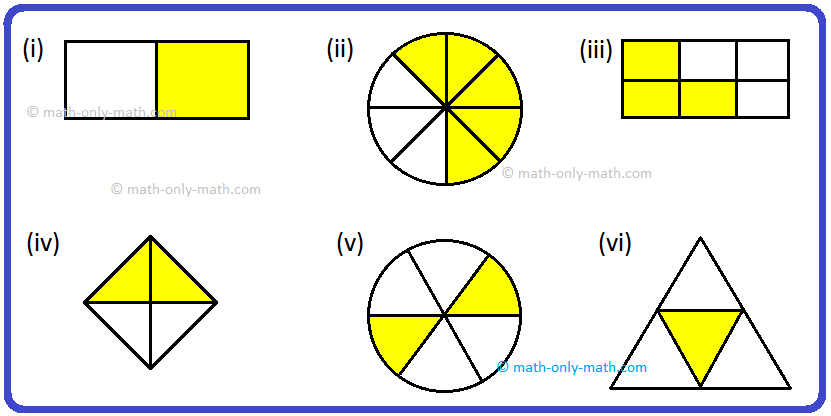











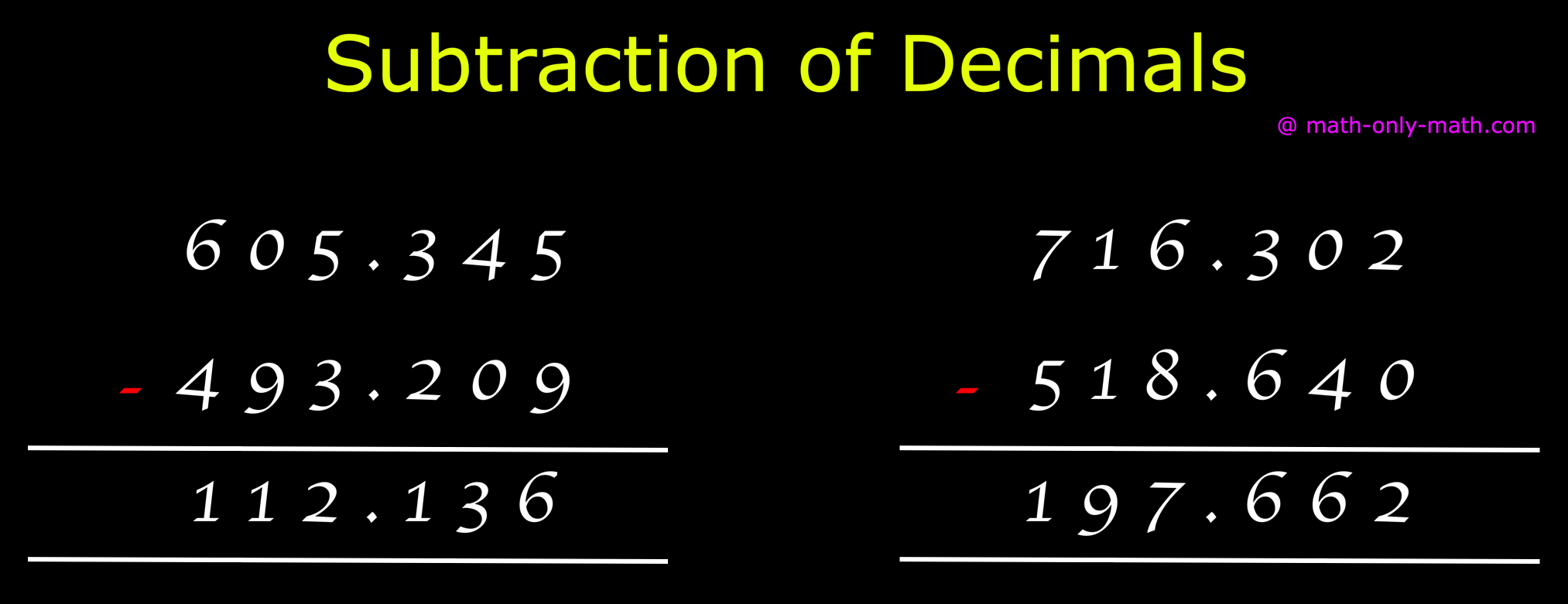
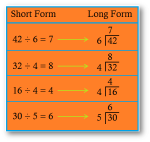
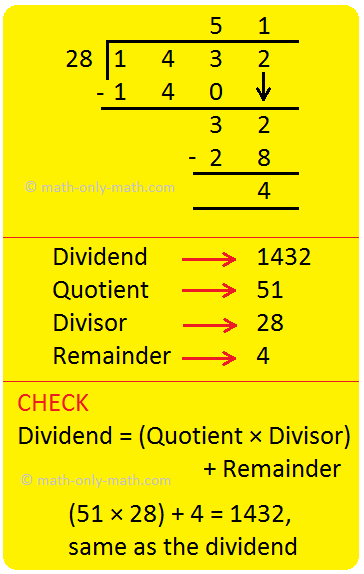

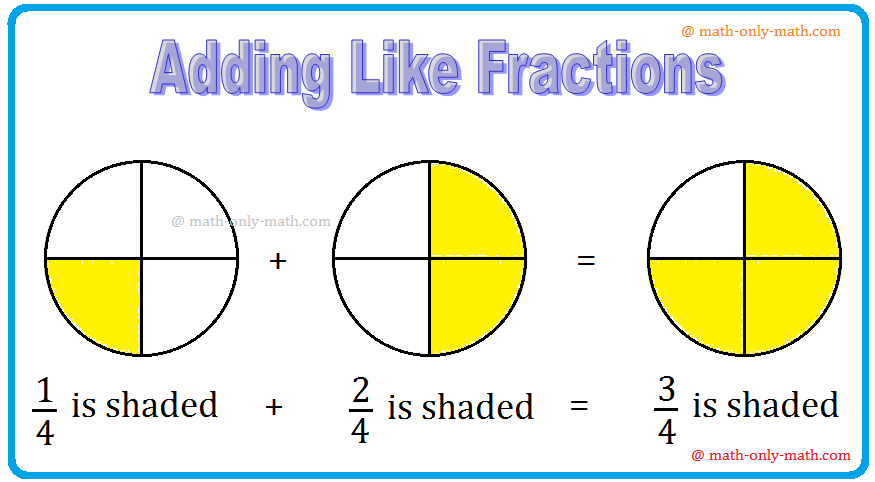
New! Comments
Have your say about what you just read! Leave me a comment in the box below. Ask a Question or Answer a Question.